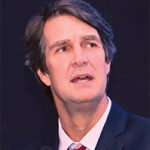Perry has a different take on the challenges. He feels the various challenges work to India’s advantage. He states, “The biggest challenge is for India to graduate from 20th century aspirations for motorization – internal combustion powered two and four wheelers – to a 21st century idea of sustainable mobility. The sooner the better, since most Indian urban environments have not gone past the point of no return. In a way, by being ‘behind’, Indian cities without realizing it, are actually ahead of many of their western counterparts regarding 21st century active mobility”.
Gollop, however, feels there must be room for continued expansion as it gets difficult to keep up with the pace of technological advances. “Within the transportation context, technological advances continue at such a pace that it can be difficult to assess the best path forward, or differentiate between practical applications and hyperbole,” he says. “Autonomous vehicles are an area that is now starting to have an impact on the development of intelligent transport systems (ITS) infrastructure. Although there has been much debate about the ongoing need for ITS, it is apparent that the requirements to co-ordinate traffic across the whole city and the safety needs of other road users, such as pedestrian and cyclists, will result in their continued presence”.
 “I am concerned that a lot of weight is being put into technology solving transportation problems in India without the basics being strong enough for those technologies to have a consequential or long term effect. The ‘wise’ city must see beyond short term fashion and trends and look in earnest at where the most progressive cities want to be, not where they were 10 or more years ago”.
“I am concerned that a lot of weight is being put into technology solving transportation problems in India without the basics being strong enough for those technologies to have a consequential or long term effect. The ‘wise’ city must see beyond short term fashion and trends and look in earnest at where the most progressive cities want to be, not where they were 10 or more years ago”.
– Guy Perry
Shankar cites requirement of huge funding for infrastructure, foreseeing demand for future city and provisioning for future demand, accommodating the dynamic technology improvement, and lack of qualified & experienced transport experts and urban designers as the major challenges. He says: “Indian cities are experiencing rapid urbanization as an effect of economic growth and industrialization. The urbanization process impacts the spatial distribution of land uses and travel demand created by the distribution of activities. Therefore, it becomes imperative that the mobility of people and goods should be planned appropriately to minimize congestion and other environmental impacts on the newly developed cities”.
Tandon, on the other hand, sees the challenges as old vs new. He says, “The challenges are far greater in old cities which must be retrofitted without destroying the existing urban fabric. Construction must take place, ensuring at the same time that people’s livelihood is not interrupted. The shops must open, the establishments must run, the workers must reach their destination”.
 TrafficInfraTech Magazine Linking People Places & Progress
TrafficInfraTech Magazine Linking People Places & Progress